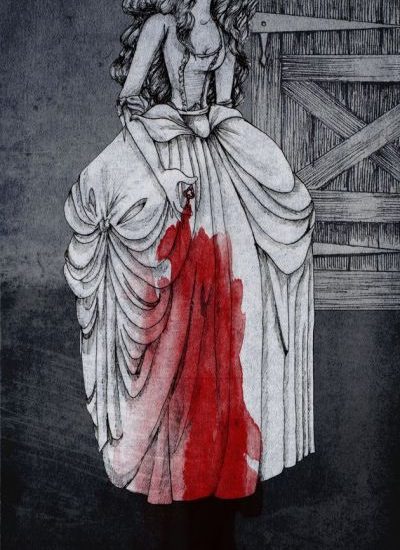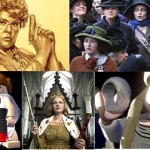They are determined to ‘cure’ that person by love.
Dr Clarissa Pinkola Estes, Women who run with the wolves (1992)
(This blog may contain spoilers for basically everything: Bridgerton, A discovery of witches, Wuthering Heights, Rebecca, Jane Eyre, Twilight, Pride and Prejudice, The Bloody Chamber)
This month in the Fairytale Medicine course, we are studying the old fairytale of Bluebeard.
Bluebeard is the story of a wealthy man who comes courting some sisters, taking them out into the woods and giving them ribbons and tasty treats. After a while of enjoying his attentions, the youngest one marries him convincing herself that he’s not so bad even though the older sisters are wary. She moves into his palace and as he is going away for a while, he gives her the keys to the palace with the proviso of not using the smallest key on the key ring. She invites her family to stay and goes exploring the palace with her sisters, opening rooms with the keys and discovering riches and surprises behind each door. Finally, they use the smallest key and they find the room of his previous dead wives remains. The key starts bleeding so that on his return, Bluebeard knows she has disobeyed his orders. He tells her to get ready to be killed but she instruct her sisters to call for their brothers who promptly arrive and kill Bluebeard.
Apparently Bluebeard is based on a 14th century French aristocrat, Gilles de Rais, who tortured and decapitated children for his own entertainment, and as life often imitates art, Bluebeard is reminiscent of Henry VIII, who invented the Church of England so that he could divorce his first wife and marry Anne Boleyn, whom he beheaded when he tired of her.
Alongside this new story, I watched some Bridgerton and all of A Discovery of Witches and I couldn’t stop thinking about the parallels between them and Bluebeard, even though both male protagonists seem to have been inspired by Jane Austen’s Mr Darcy in Pride and Prejudice. Darcy is standoffish but saves our heroine’s sister’s reputation so Lizzie, our heroine can’t help but fall in love with him even if he is a bit of a prig and doesn’t explain himself until the very end. He’s not a killer, but we don’t find out what happens to Lizzie after she marries him, though many authors have written sequels imagining their lives together.
I got bored of Bridgerton and the Duke’s inability to just simply explain himself to our heroine whilst she remains hellbent on following the Bluebeard pattern of hanging on in there and curing him and saving him with her love, but it’s all okay whatever she suffers as she has great sex. Same goes for our heroine in A Discovery of Witches, she pledges her own life to save his, giving over her blood until she needs a blood transfusion, and later on lets him drink her blood in some sort of sex scene when he drew blood from the top of her breast. Apparently, both men don’t need to explain themselves because it’s not their fault that they behave this way.
Often around Valentine’s Day, we see a top 10 romantic heroes list, invariably they have Mr Darcy on there, and if that’s not bad enough, there’s Heathcliff from Wuthering Heights. Heathcliff is a total Bluebeard – a misogynist and a sadist to boot – who tortures the people in his care, but because his girlfriend died and he is upset, he’s a romantic hero.
On the same list, we have the newish addition of Twilight‘s Edward Cullen, another one who is possessive, a stalker and super controlling but it’s okay as he is handsome and has a lot of money and is just looking out for our helpless heroine who is clumsy and fragile.
Then, there’s always Mr Rochester from Jane Eyre who keeps his wife in the attic and tells the heroine not to go up there. Jane doesn’t know that it’s his first wife, and that Mr Rochester is a would-be bigamist wanting to marry Jane, all the while knowing that Jane would never agree to be a sister wife, so he lies to her instead. Apparently, Charlotte Bronte was clear about her novel being based on Bluebeard, but Rochester suffers a bit so it’s okay so when his wife dies he gets the girl and really is a nice chap.
Another romantic hero is Maxim du Winter from Rebecca who actually did murder his wife and the guilt makes him moody and weird with his young heroine whom he brings her back to his place without ever explaining that he used to have a wife, it is other people who tell her. Turns out his wife was dying anyway so that’s okay then.
I wanted to watch the new Rebecca on Netflix but in the trailer showing both our heroine and Maxim D-W there’s no obvious big gap in age or experience, and so it didn’t seem plausible. The whole premise of the book is that our girl is barely 19 years old – hence her inexperience and naivety, and he is in his late 30s at least and should really know how to communicate better, but really doesn’t feel the need to explain himself to anyone. The new Netflix version doesn’t allow for that they look the same age.
The question is though: What’s with all the misogyny? Well, Dr Estes says that Bluebeard’s blue beard indicates that he is a failed magician and instead of admiring young women with their light and great shakti he is jealous and feels compelled to snuff them out to cope with his outlaw status of having fallen from the light.
It definitely feels in all of the books that I have mentioned that women are there to be consumed, they are objects of desire, they are pawns in the game. The men have their real lives and then some female entertainment/comfort/distraction on the side, which is how life was for so long, given that women were treated as chattels and so it was all important for them to marry.
From the women’s point of view, Bluebeard feels dangerous and exciting with great sex on offer as he has experience, as well as providing a life of luxury in a paradise of a stately home, a castle, a palace. In return she just has to do as she is told but she is used to that as her mother, brother, sister and everyone else have up until then as everyone conforms to the patriarchal norms of our overculture – society.
I remember when I was writing my series about women in society, storytelling and technology, it felt like I had opened the bloody chamber and peeked inside at the damage society causes us all, men and especially women, by casting us in certain roles and I was carrying a key which bled all over the rest of my life. Ever since, I have yearned to see new stories of women who are not constantly compromising themselves with men who are emotionally stunted and think that women are just there as toys. I want real stories about women where marriage isn’t the main goal. Sadly it is women who are writing these stories and women who are raising men to behave like emotionally deficient individuals who never have to explain themselves. Society may be changing in some ways but not fast enough when we get to the same old story of women compromising and men being manly and who are given permission to behave badly at home and in the workplace.
In Angela Carter’s version of Bluebeard: The Bloody Chamber (1979), the vivid prose creates a direct link between sex and violence and I love how the heroine says:
I lay in bed alone. And I longed for him. And he disgusted me.
Ain’t that the truth? She has an itch that needs scratching and has been seduced by the wealth at her new husband’s disposal and can’t seem to undo what she’s done. She has literally made her bed and is lying in it, ready to pay the ultimate price until her mother rescues her. This version made me feel dissatisfied as I wanted our heroine to rescue herself, until I realised that she couldn’t. She was brought up on a diet of Darcy and believed that Bluebeard could be cured with love. It has taken her mother all of her life to realise that when she was hoping for a Mr Darcy – emotionally cold, but an honourable bloke (I rolled my eyes when I typed that) – she actually got a Bluebeard and if our heroine doesn’t actually die at his hands she will slowly cut off parts of herself to conform until she no longer knows who she is.
Forty years later we are still watching our TV heroines marrying Bluebeard and paying the price. I can’t even look! Let’s hope the next generation of storytellers break out of the same old, same old so that our heroines have stories of their own.







I can well understand your frustrations about the patriarchal thread running through the stories you have used in your examples but I think some of this is due to lazy dramatisation. It must be easier to repeat the well known arcs of famous heroes: Heathcliff, Mr Darcey and Mr Rochester and then divert viewers attention with atmospheric views and pretty dresses rather than take the trouble to look beneath the surface of the texts.
Pride and Prejudice was first published in 1813 and Jane Austen was famous for her penetrating observations of society’s mores and often poked fun at the very class she was brought up in. The first paragraph, which is also the first sentence: “It is a truth universally acknowledged, that a single man in possession of a good fortune, must be in want of a wife” is a loaded sentence and is reprinted more than any other part of the book, implying that’s as far as any reader needs to proceed. This is a shame as there is so much more to this tale and that would be revealed with a slow and careful reading.
Heather, after pondering further, I think that’s my question: Why recycle old stories from nearly 200 years ago? Austen may be heavy on the irony but she is still selling us a version of Bluebeard.